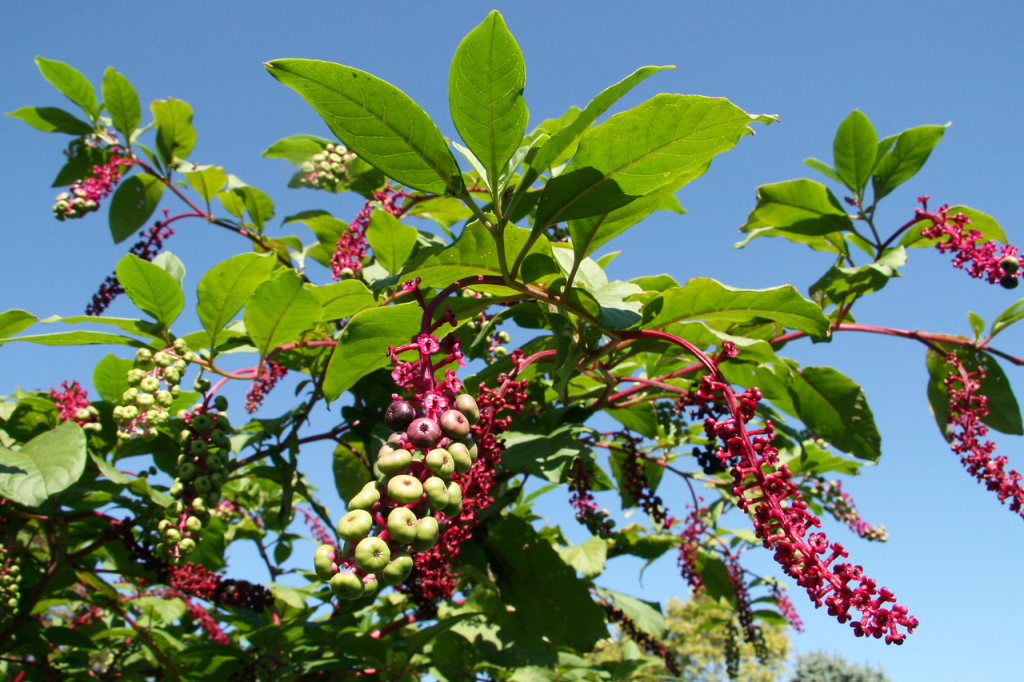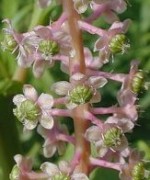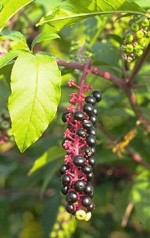
Pokeweed, also called inkberry and scoke, is a herbaceous perennial native to eastern United States, the Midwest, and the Gulf Coast where it grows in open woods, thickets and disturbed sites such as pastures, roadsides, and fencerows. It is a member of the pokeweed family, Phytolaccaceae, a relatively small family of 33 species. The plants are sometimes included in the garden as an ornamental but are considered weedy in many areas. The well cooked young leafy shoots and berries are sometimes consumed in Southeastern US, the berries are used as a food coloring, and the berries, roots, and leaves are used in medicines. None of these uses are recommended. Photo Credit: Huw Williams, Wikimedia Commons

Description: Plants emerge in the spring and grow up to 10 feet tall in ideal sites. The erect, smooth, hairless stem branches regularly and may be green to purplish red, becoming smaller in size as they ascend. The leaves are up to 12″ long, give off an unpleasant odor when crushed, and have smooth margins and conspicuous pink veins on their lower surface. Clusters of flowers are produced in upright or drooping racemes from early summer to early fall. The flowers lack petals but have four white to pink sepals that look like petals. The flowers give way to juicy green berries that turn white, then purple, as they ripen and contain 10 black shiny, lens-shaped seeds that can persist in the soil for 40 years. Birds that eat the berries are significant in the spread of the weed. The root system consists of a fleshy taproot that can resprout when the plant is cut down. Photo Credit Wikipedia

Poisonous Properties: The entire plant contains highly poisonous compounds especially the roots and seeds. The toxic substances include the water soluble triterpene saponins, phytolaccigenin, phytolaccin, and phtolaccatoxin. In addition, pokeweed contains a protein lectin, a mitogen, that can cause serious and wide-ranging blood cell abnormalities. It can be absorbed into the body through cuts and skin abrasions as well as by ingestion.
When pokeweed is consumed, a burning sensation in the mouth is followed in 1-2 hours by symptoms that include abdominal cramps, vomiting, diarrhea, and occasionally convulsions and death. Serious problems may develop in babies and toddlers who eat even a few berries. Animals rarely eat the plant because of they find the taste unpleasant although pigs have been known to eat the roots with bad effects. Photo Credit Wikipedia